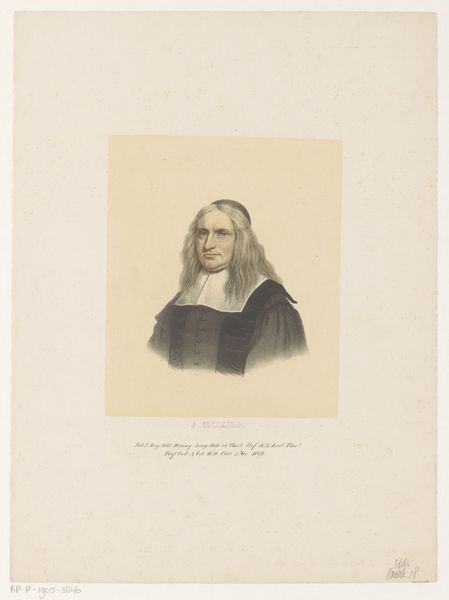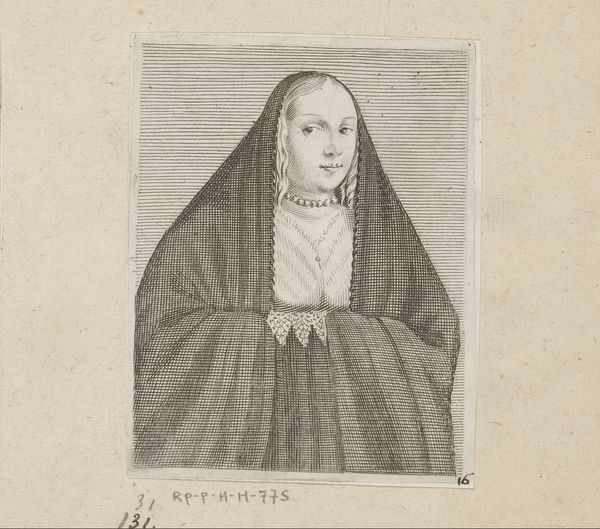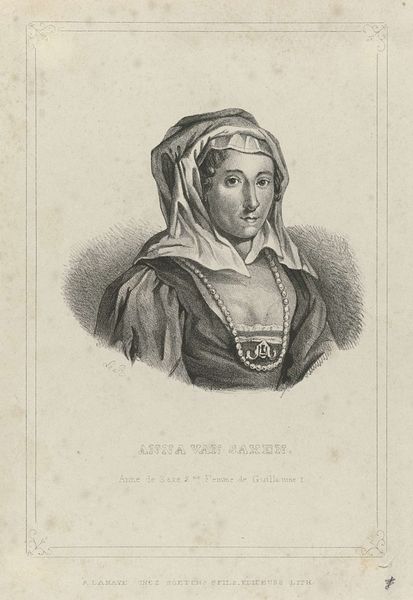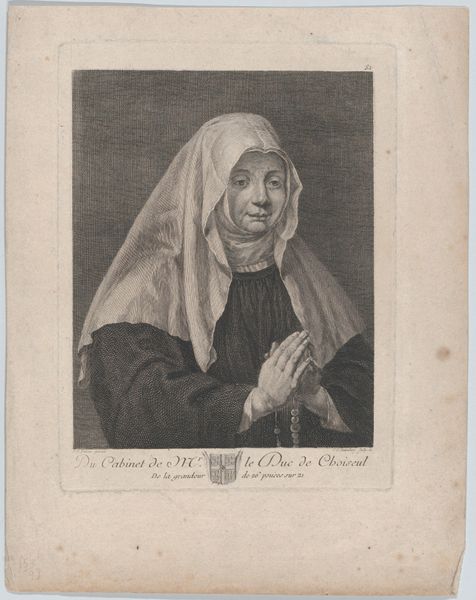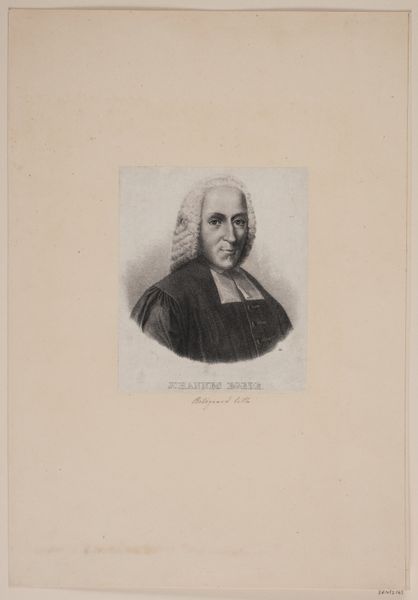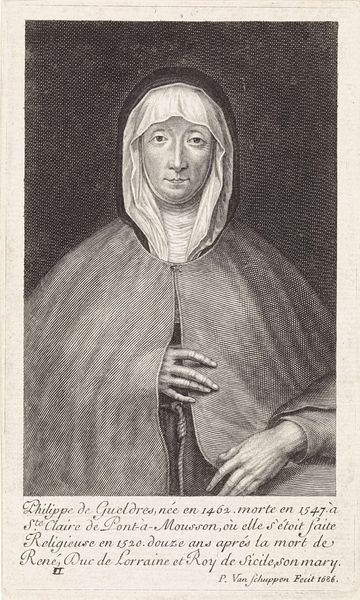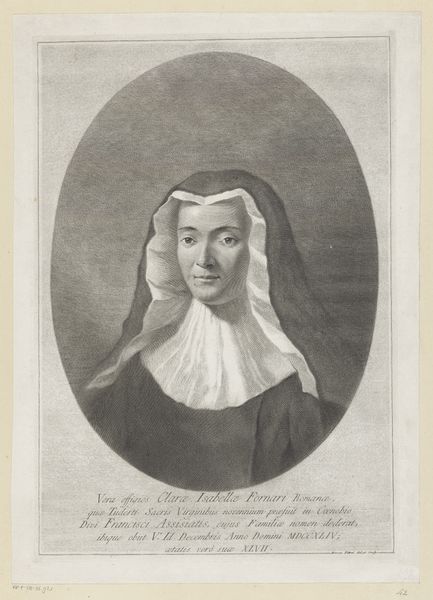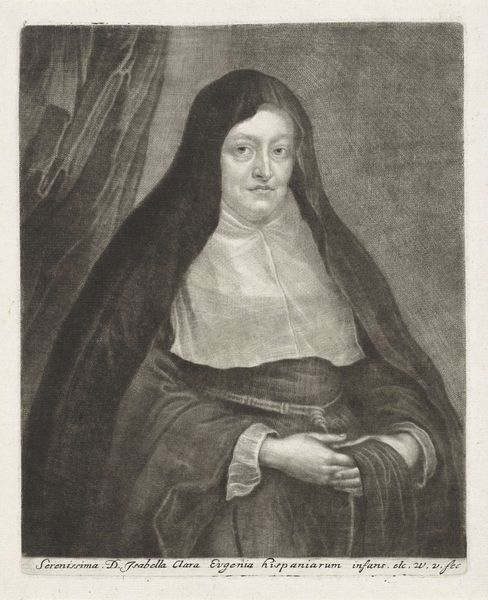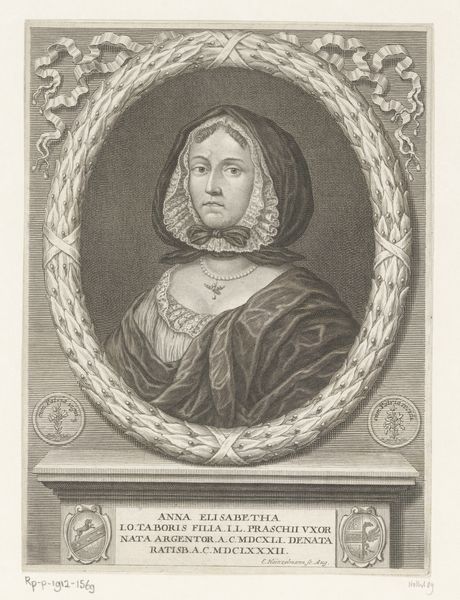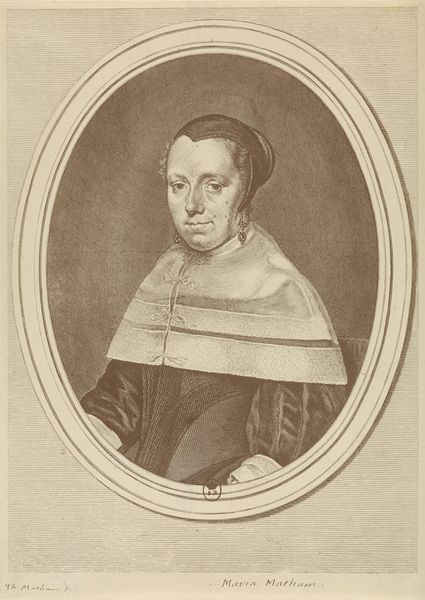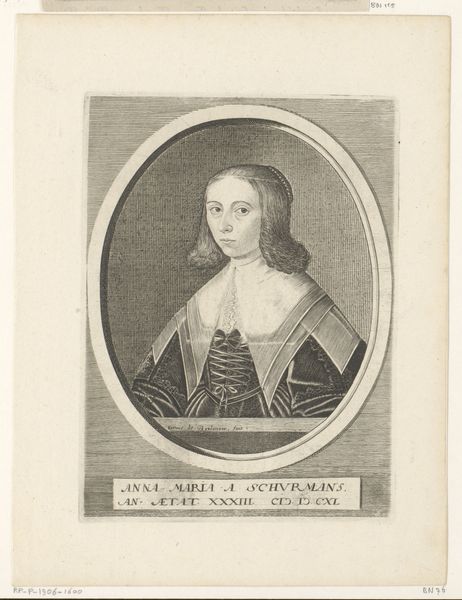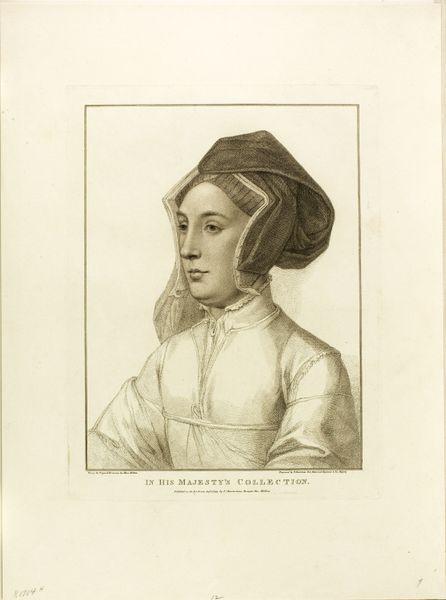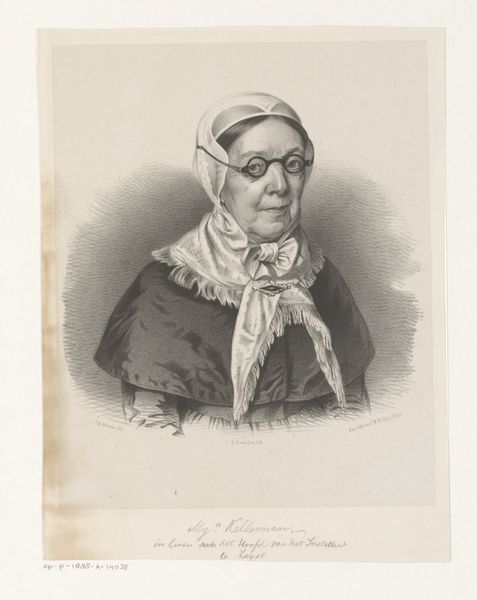
drawing, lithograph, print, pencil, graphite
#
portrait
#
pencil drawn
#
drawing
#
lithograph
# print
#
pencil drawing
#
pencil
#
graphite
#
portrait drawing
Dimensions: 266 mm (height) x 232 mm (width) (bladmaal)
Curator: Looking at this lithograph, "Gertrud Rask," created in 1876 by Lars Møller, housed here at the SMK, I'm immediately struck by its formal qualities. It embodies 19th-century portrait conventions while also reflecting a very specific social milieu. What do you see? Editor: Oh, wow. First impression? Serenity, I guess. She has these calm, knowing eyes. Like she's seen a thing or two and decided to keep it classy. And that elaborate bonnet… it feels like a world unto itself. There's almost a graphic novel vibe to this portrait. It has this simple comic-book quality. It really has personality! Curator: It's fascinating to consider how Møller uses graphite and lithography together. There is a certain level of realism for portraits produced for this purpose. Lithographs allowed for relatively easy reproduction and distribution, solidifying visual narratives about specific individuals or societal types within the era. Editor: Exactly! You get the sense of wanting to understand the subject more. Gertrud’s expression does tell some part of her, you just don’t know exactly what. Is she sad, melancholic, empowered, or maybe resigned? And technically, this drawing isn't just representing Gertrud, it’s doing a specific kind of labor of showing an idealized version for future viewers and admirers to enjoy. Curator: This image is likely based on other drawings done by the same author, who might have tried to elevate this person within the imaginary of her time. Perhaps an attempt to represent her with elegance to secure her status. Also notice the gaze she offers—it projects both strength and consideration. How might this interplay challenge notions of historical femininity or status? Editor: Hmmm, interesting point about challenging status. I wonder if she actually liked that bonnet. Perhaps it's more of a social straightjacket than anything else. It confines the female figure. On second thought, all of that lace surrounding her neck feels kind of heavy. I am so curious about how people perceive themselves within the fashions and norms of the time. How did these things shape one’s sense of identity? Curator: Exactly. Considering the societal conventions during the late 19th century, particularly concerning gender roles and public representation, there is always tension with art. This portrait captures a particular kind of balance—between idealization, realistic character and status. What lasting impact could visual representations like “Gertrud Rask” have? Editor: Well, for me, it's that sense of quiet dignity amid all the artifice of her dress and station. That stays with you. There is more here than it might seem at first glance. And just for that, it makes me keep thinking about how society dictates some paths. Curator: Agreed. It’s a layered and nuanced image, provoking dialogue even after so many years, reflecting the complicated visual culture it occupied and actively participated in.
Comments
No comments
Be the first to comment and join the conversation on the ultimate creative platform.
